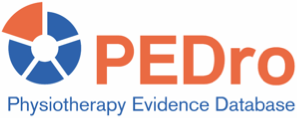Stroke is the third leading cause of disability and the second leading cause of mortality worldwide. Stroke units provide guideline-directed and multi-disciplinary care (medical, nursing, and allied health, including physiotherapy) for patients hospitalised with stroke. This systematic review aimed to estimate the effect of stroke unit care compared to an alternate form of inpatient care (conventional care or an alternate model of stroke unit care).
The review performed sensitive searches of 13 databases and trial registers (including Medline, Embase, and Cochrane CENTRAL) plus other strategies (including checking reference lists and contacting trialists) to identify randomised controlled trials that compared stroke unit care with an alternate form of inpatient care for people who had sustained a stroke. Pseudo-randomised trials and cross-over trials were excluded. Any model of stroke unit care was included (dedicated stroke ward, mobile stroke team, mixed rehabilitation ward). The comparator was an alternate form of inpatient care, which could include conventional care in a general medical ward or an alternate model of stroke unit care. A clinical definition of stroke was used, and there were no restrictions based on stroke severity or type, age or sex. The composite outcome of death or dependency or requiring institutional care (termed a “poor outcome”) at the end of scheduled follow-up was the primary outcome. One reviewer screened the titles and abstracts of the search results to exclude obviously irrelevant articles. Two reviewers selected trials for inclusion, extracted data, and evaluated risk of bias and certainty of evidence. Risk of bias was evaluated using the Cochrane risk of bias tool. Certainty of evidence was classified using the Grading of Recommendations Assessment, Development and Evaluation (or GRADE) approach. Meta-analysis was used to estimate the risk of a poor outcome, expressed as an odds ratio and its 95% confidence interval (CI). Four subgroup analyses were performed: (1) age < 75 years versus 75 years or older; (2) female versus male; (3) mild versus moderate versus severe stroke, and, (4) ischaemic versus haemorrhagic stroke. Network meta-analysis was used to explore the impact of different models of stroke care, with effect size reported as odds ratios and 95% CIs.
29 trials (5,902 participants) were included in the analyses. 20 trials (4,127 participants) compared stroke unit care with conventional care in a general medical ward, 6 trials (982 participants) compared different models of stroke unit care, and 3 trials (793 participants) incorporated more than one comparison.
There was moderate-certainty evidence that stroke unit care reduced the risk of a poor outcome at the end of scheduled follow-up (median 1 year) compared to conventional care, with an odds ratio of 0.77 (95% CI 0.69 to 0.87; 26 trials; 5,336 participants). This outcome was independent of patient age, sex, stroke severity, and stroke type.
The network meta-analysis revealed that this effect was largest when the model of stroke unit care involved a dedicated stroke ward. Using conventional care in a general ward as the comparator, the odds of a poor outcome were 0.74 (95% CI 0.62 to 0.89; moderate certainty) for dedicated stroke wards, 0.88 (95% CI 0.58 to 1.34; low certainty) for mobile stroke teams, and 0.70 (95% CI 0.52 to 0.95; low certainty) for mixed rehabilitation wards.
Stroke patients who receive stroke unit care are more likely to be alive, independent, and living at home 1 year after the stroke. This benefit was independent of patient age, sex, stroke severity and stroke type, and was most obvious in stroke units based in a discrete stroke ward. For every 100 stroke patients receiving stroke unit care, two extra patients will be alive, six more will be independent, and six more living at home.
Langhorne P, et al. Organised inpatient (stroke unit) care for stroke: network meta-analysis. Cochrane Database Syst Rev 2020;Issue 4



